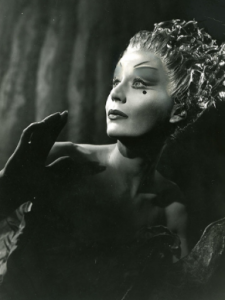I found the weekly map assignment to be challenging (in a strange sense) and interesting. In looking at my classmates’ maps, I developed a deeper appreciation for the individual nature of maps.
The challenge for me in my map assignment was just how little I move around. If you asked me on a day-to-day basis if I felt like I went a lot of places, I would say yes, of course! I give tours to prospective students, go to class, go eat, walk around, maybe sit outside, go to club meetings, hang out with friends, maybe work at the museum, go to the gym – lots of things! But all of these are within maybe a half a mile of each other. Looking at my week on a world map really puts things into perspective. Especially when I was home for spring break, this rang true. My spring break this year was a bit busier than usual. I had just gone through a brief break-up, and was in a very self-motivating, “Miss Independent” mood. I made sure to always stay busy, and so I visited 4 different cities, saw a lot of friends, and never sat still. Even with all of the traveling I did, it still didn’t seem as if I did all that much on my map. I still was centered around where I live – outside of Philly, and (less often), in Georgetown in DC. When I take into account all of the places I’ve been (or most at least, which I did in the second layer of my second map), it looks a lot more impressive. I’ve seen most of the country, and quite a few places in Western Europe. Even still, when I lay out all of these places visually on a map, it’s clear to me that I stay within my comfort zone. The place that has pushed me the most was Morocco, in terms of a different culture and way of life, but even that was not too different – and I was only there for a day! I grew up and live in a western perspective, and I travel with and into a western perspective as well. When I map, I am mapping in a certain way because I am steeped in this specific way of viewing things.
I mapped last week about where I plan to go this summer. I tried to be reasonable, and based this off of what I did last summer, as well as some plans I have loosely made with friends. Other than my family vacation to North Carolina, I won’t be foraying out of the northeast. Part of this is practical: my car was totaled last summer and so I don’t have great mobility. I live conveniently close to several major train stations, though, so most of the northeast is very accessible and fairly cheap. I have the benefit of having a family who has two houses near/in two large cities as well, and so I can explore both DC and Philly in my free time when I’m not working. These are more benefits than most people will ever have, and so in this way, mapping has made me both more aware of my travel limitations, and more thankful for the few limitations that I have.
In addition, it was interesting to see the maps of my classmates. Some of them were more creative, some more technical. Kelt’s maps in particular stood out for me, mostly because I didn’t understand them. One of his maps, for example, was an partial alphabetical list of countries. Most of them were fairly obscure in the sense that they are not often frequented by American travelers. I could only think that maybe it was an alphabetized list of countries he hasn’t visited (or maybe ones he thinks he should?). His maps were interesting simply because I didn’t get them. I think this says something interesting about reading maps. When I see a map, my first instinct is to look at the title, the locations, to locate myself in reference to the map. I want to know what is going on in the map, where I am. Some of Kelt’s maps weren’t titled, leaving me to try to use context clues to figure out what he was mapping. This is an interesting insight into map readership, as well as into what people are interested in. This plays with the ideas of the “unknown” that we talked about in class. The “unknown” is fascinating purely because it is not known. By virtue of its identity, it is inherently interesting to people. Kelt’s maps held some of that idea for me, though I’m not sure if that was his intention or not.
The map assignment for me was very interesting and eye-opening, both on a personal and on an academic level.




